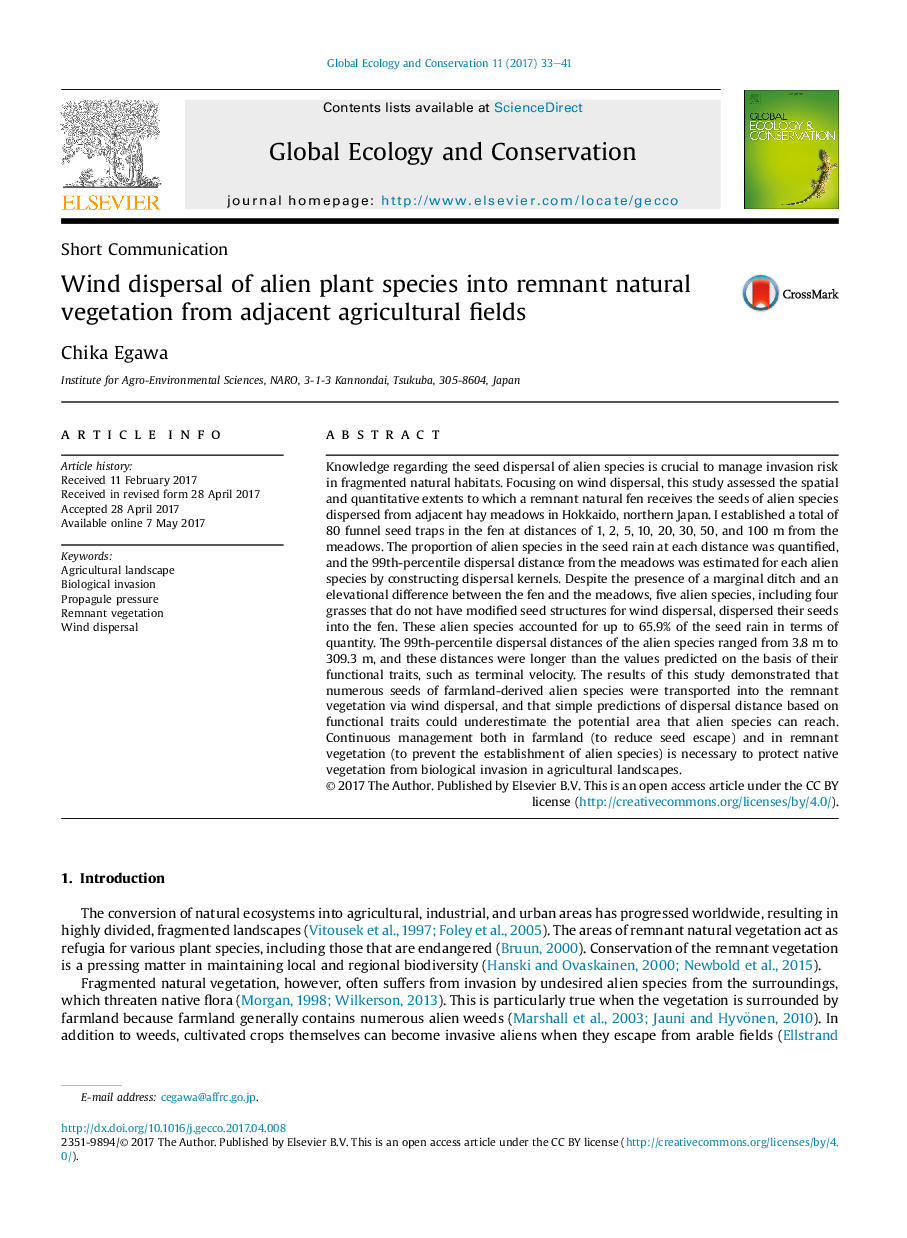| کد مقاله | کد نشریه | سال انتشار | مقاله انگلیسی | نسخه تمام متن |
|---|---|---|---|---|
| 5742397 | 1617656 | 2017 | 9 صفحه PDF | دانلود رایگان |
- Wind dispersal of alien weeds into a native fen from adjunct pastures was assessed.
- Alien species accounted for up to 65.9% of the seed rain at the fen edge.
- Their 99% dispersal distances were longer than the trait-based model prediction.
- Continuous risk management both in farmland and remnant vegetation is necessary.
Knowledge regarding the seed dispersal of alien species is crucial to manage invasion risk in fragmented natural habitats. Focusing on wind dispersal, this study assessed the spatial and quantitative extents to which a remnant natural fen receives the seeds of alien species dispersed from adjacent hay meadows in Hokkaido, northern Japan. I established a total of 80 funnel seed traps in the fen at distances of 1, 2, 5, 10, 20, 30, 50, and 100Â m from the meadows. The proportion of alien species in the seed rain at each distance was quantified, and the 99th-percentile dispersal distance from the meadows was estimated for each alien species by constructing dispersal kernels. Despite the presence of a marginal ditch and an elevational difference between the fen and the meadows, five alien species, including four grasses that do not have modified seed structures for wind dispersal, dispersed their seeds into the fen. These alien species accounted for up to 65.9% of the seed rain in terms of quantity. The 99th-percentile dispersal distances of the alien species ranged from 3.8Â m to 309.3Â m, and these distances were longer than the values predicted on the basis of their functional traits, such as terminal velocity. The results of this study demonstrated that numerous seeds of farmland-derived alien species were transported into the remnant vegetation via wind dispersal, and that simple predictions of dispersal distance based on functional traits could underestimate the potential area that alien species can reach. Continuous management both in farmland (to reduce seed escape) and in remnant vegetation (to prevent the establishment of alien species) is necessary to protect native vegetation from biological invasion in agricultural landscapes.
Journal: Global Ecology and Conservation - Volume 11, July 2017, Pages 33-41
